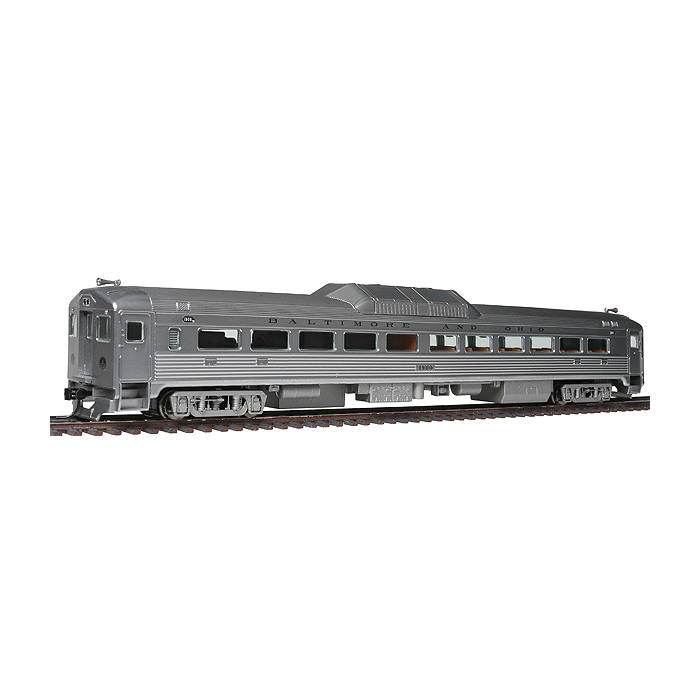Walthers Proto Budd RDC-1 Coach # 920-35250 Baltimore & Ohio #1900
$129.95
In stock
SKU
1000029
Walthers Proto Budd RDC-1 Walthers Part # 920-35250 New in Package and unopened
Baltimore & Ohio #1900 (Plated Finish)
* Now With Real Metal Finish * Revised Circuit Board with NMRA 8-Pin Plug for Easy DCC Conversion
* 4-Wheel Drive & 8-Wheel Electrical Pickup
* 5-Pole Skew-Wound Motor
* Flywheel Equipped
* Authentically Contoured Radiator With Realistic Fan
* RP-25 Metal Wheels * Proto MAX(TM) Metal Knuckle Couplers
Many rural lines saw a sharp drop in passenger ridership following WWII, but trains still had to be run. To slash costs and provide reasonable levels of service, many railroads found a solution in Budd's new self-propelled Rail Diesel Car (RDC). Introduced in 1949, the design was adapted from a modern stainless steel coach. Power was supplied by a pair of small diesel engines under the floor, each driving a single axle per truck. Controls at each end eliminated turning or repositioning the car between trips, and allowed RDCs to be operated alone or coupled together as a train by a single engineer. The cars proved well suited for country routes and short-haul commuter lines, and to meet these diverse needs, Budd eventually offered five different versions. These included the RDC-1 Coach seating 90, the RDC-2 Coach-Baggage with seats for 70, the RDC-3 Coach/Baggage/Railway Post Office seating 49, the RDC-4, a 72' long Baggage/Railway Post Office model with a 30' postal apartment, and the RDC-9 (also RDC-5), a powered coach with no controls seating 94, designed as a trailer to be pulled by other RDCs. Production continued until 1962, and RDCs remained in regular service for decades afterward. Several are preserved in museums today
Walthers Proto Budd RDC-1 Walthers Part # 920-35250 New in Package and unopened
Baltimore & Ohio #1900 (Plated Finish)
* Now With Real Metal Finish * Revised Circuit Board with NMRA 8-Pin Plug for Easy DCC Conversion
* 4-Wheel Drive & 8-Wheel Electrical Pickup
* 5-Pole Skew-Wound Motor
* Flywheel Equipped
* Authentically Contoured Radiator With Realistic Fan
* RP-25 Metal Wheels * Proto MAX(TM) Metal Knuckle Couplers
Many rural lines saw a sharp drop in passenger ridership following WWII, but trains still had to be run. To slash costs and provide reasonable levels of service, many railroads found a solution in Budd's new self-propelled Rail Diesel Car (RDC). Introduced in 1949, the design was adapted from a modern stainless steel coach. Power was supplied by a pair of small diesel engines under the floor, each driving a single axle per truck. Controls at each end eliminated turning or repositioning the car between trips, and allowed RDCs to be operated alone or coupled together as a train by a single engineer. The cars proved well suited for country routes and short-haul commuter lines, and to meet these diverse needs, Budd eventually offered five different versions. These included the RDC-1 Coach seating 90, the RDC-2 Coach-Baggage with seats for 70, the RDC-3 Coach/Baggage/Railway Post Office seating 49, the RDC-4, a 72' long Baggage/Railway Post Office model with a 30' postal apartment, and the RDC-9 (also RDC-5), a powered coach with no controls seating 94, designed as a trailer to be pulled by other RDCs. Production continued until 1962, and RDCs remained in regular service for decades afterward. Several are preserved in museums today
Write Your Own Review

